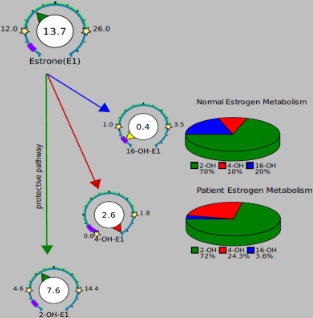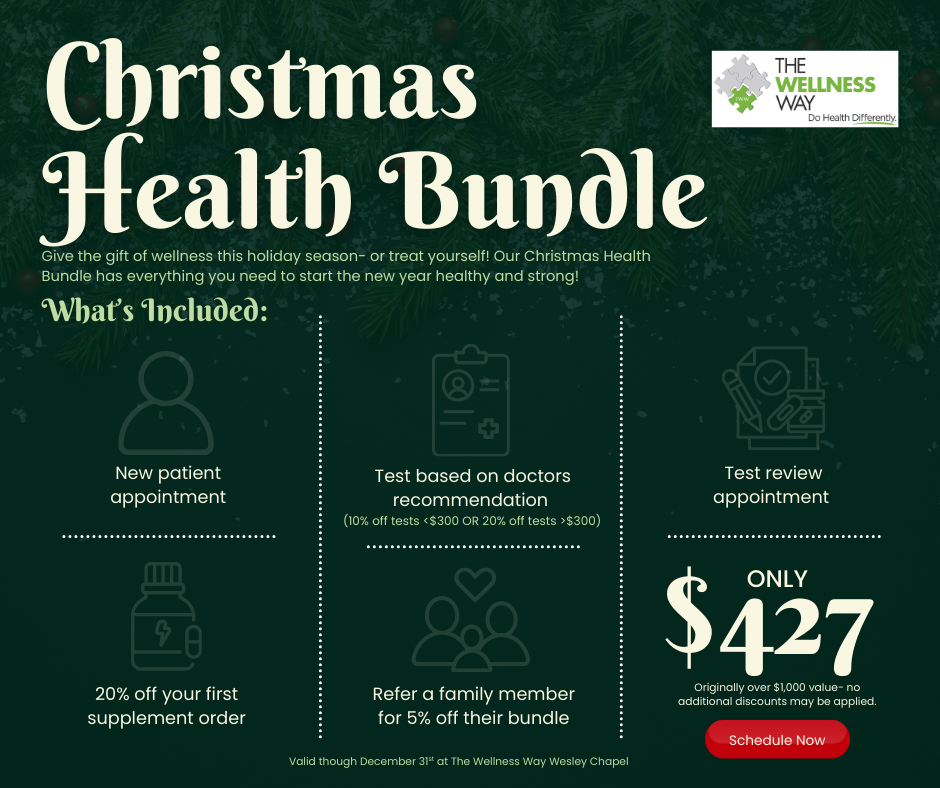When most women hear the word estrogen, they think of it as a single hormone. But here’s the truth: estrogen isn’t one hormone at all—it’s a blanket term for multiple estrogen-like compounds. And depending on how your body processes them, estrogen can either protect your health or increase your risk for serious conditions, including breast cancer.
This distinction is critical, yet it’s often overlooked in conventional medicine.
Why Estrogen Metabolism Matters
Breast cancer is a highly estrogenic condition. Some women are even prescribed estrogen blockers to reduce risk. But simply lowering estrogen doesn’t solve the problem. Why? Because it’s not just about how much estrogen you have—it’s about what your body does with it.
Even surgeries like mastectomies or hysterectomies don’t address the root issue. Women can and do still develop breast cancer after these procedures.
Here’s the bigger picture:
Genes load the gun. Environment pulls the trigger.
Your genetics may give you a predisposition, but your lifestyle, environment, and how your body metabolizes estrogen determine whether that predisposition turns into a diagnosis.
The DUTCH Test: Looking Beyond “Normal”
A standard blood test might tell you that your estrogen levels are “normal.” But that doesn’t explain why you’re still experiencing symptoms like heavy periods, breast tenderness, or mood swings.
That’s where the DUTCH hormone test comes in. Unlike conventional labs, the DUTCH test doesn’t just measure hormone levels—it shows you how your body is breaking them down into three main metabolites:
- 2-OH → Generally protective
- 16-OH → More proliferative, can fuel tissue growth
- 4-OH (CYP1B1 activity) → The most concerning, because it creates metabolites that can directly damage DNA if not neutralized properly
Conventional medicine rarely looks at the 4-OH pathway, yet it’s one of the most important markers when assessing breast cancer risk.

Patient Story: “M’s” Experience
“M,” age 43, came to us worried about a lump she felt in her breast. She had a history of breast cancer in her early 40s and was experiencing classic estrogen-dominant symptoms:
- Heavy periods
- Weight gain around the hips
- Mood swings
- Breast tenderness
Her OB/GYN reassured her that her blood estrogen was “normal.” But M wanted deeper answers.
When we ran a DUTCH test, here’s what we found:
- Normal overall estrogen levels on the surface
- High 4-OH activity (CYP1B1) → producing harmful, DNA-damaging metabolites
- Limited methylation capacity → her body struggled to clear these estrogens effectively
For M, this explained both her symptoms and her ongoing risk profile—things her standard labs completely missed.
Patient Story: “M’s” Experience
With these insights, we created a personalized plan to:
- Support detox pathways for safer estrogen clearance
- Reduce environmental triggers (plastics, chemicals, alcohol) that fuel the CYP1B1 pathway
- Shift estrogen metabolism toward the safer 2-OH pathway through targeted nutrition and lifestyle
- Partner with her oncology team for ongoing safety and monitoring
This is what it looks like to go after the root cause instead of just chasing symptoms.
What This Means for You
If you’ve ever been told your estrogen levels are “normal” but you’re still dealing with heavy cycles, breast tenderness, or unexplained weight gain—there’s more to the story.
The DUTCH test could reveal how your body is really handling estrogen, and whether your metabolism is protecting you… or quietly increasing your risk.
Ready to Learn More?
At The Wellness Way – Wesley Chapel, we don’t stop at “normal.” We dig deeper, because your health deserves answers that actually explain your symptoms.
Curious if the DUTCH test is right for you? Schedule your discovery call today and take the first step toward understanding your hormones—and your health—on a deeper level.



